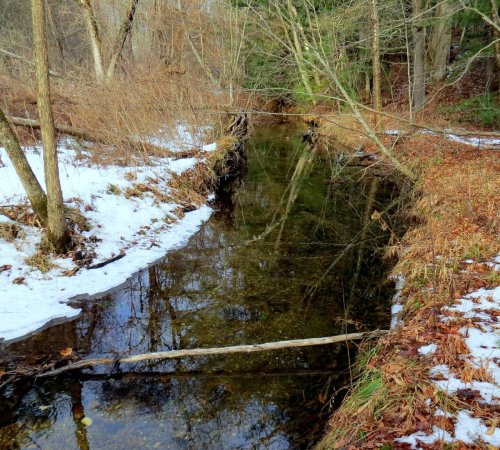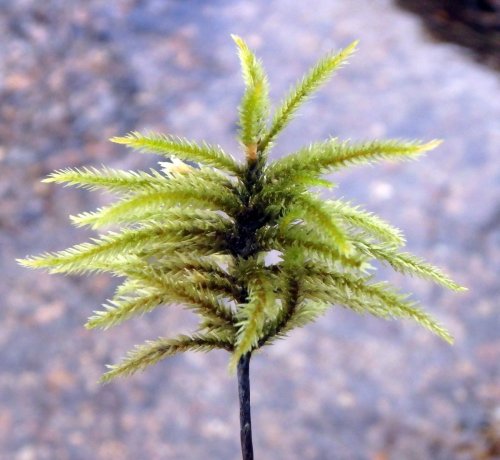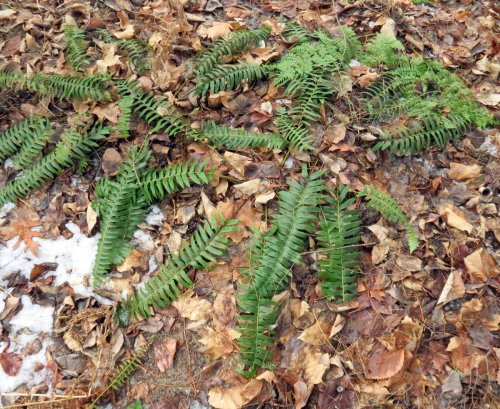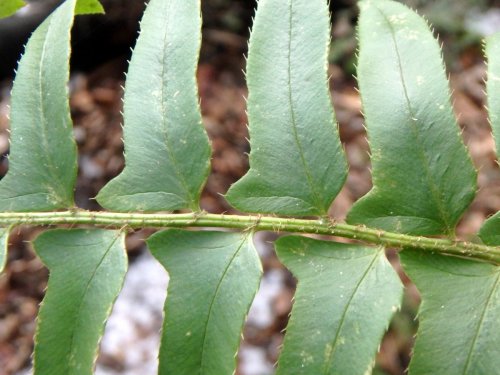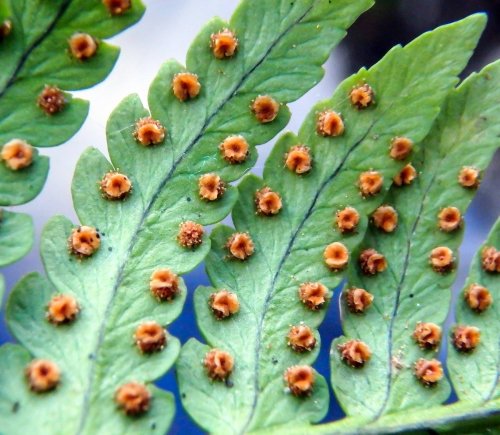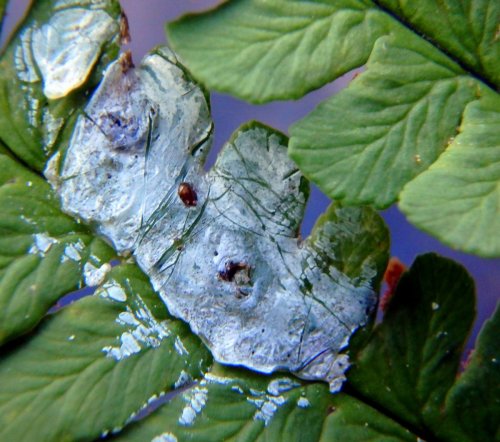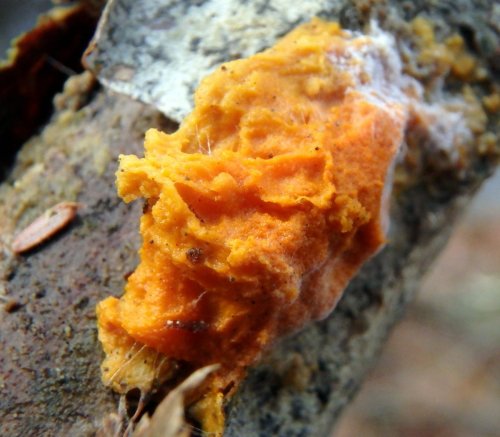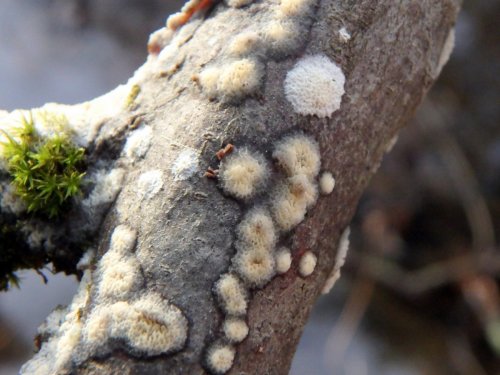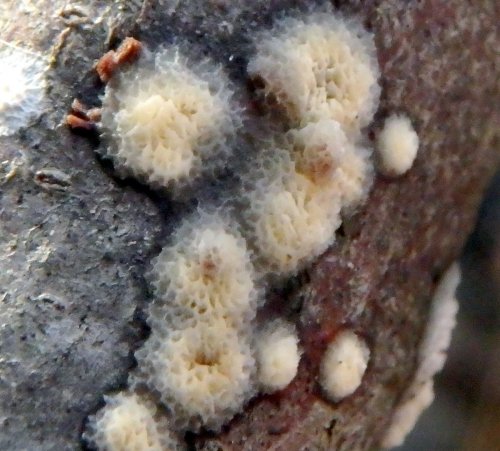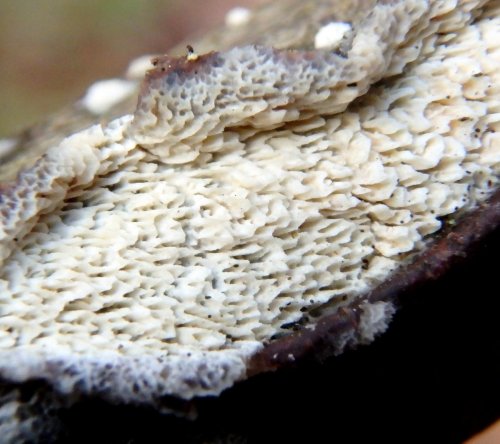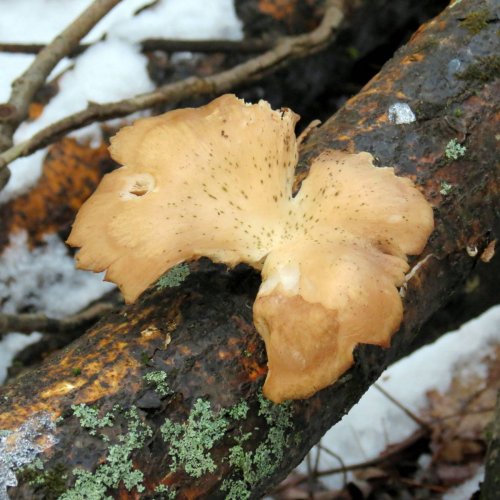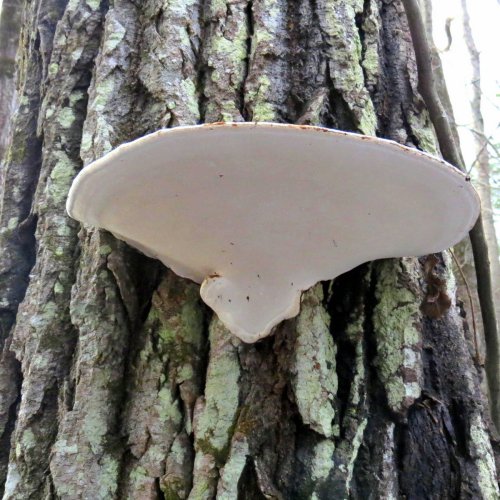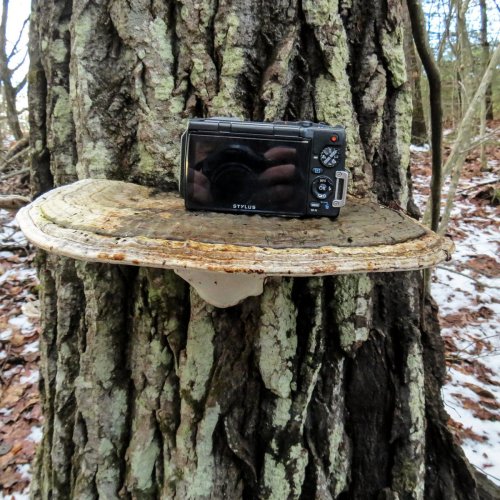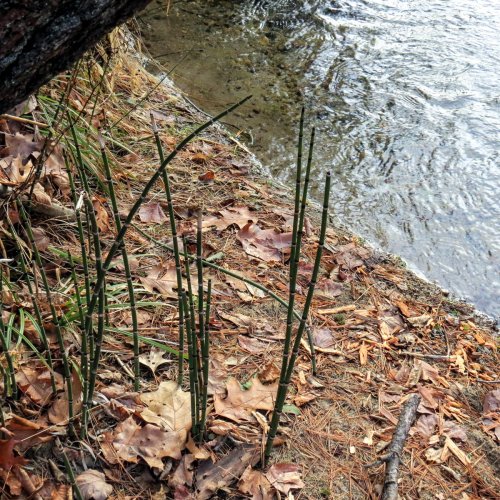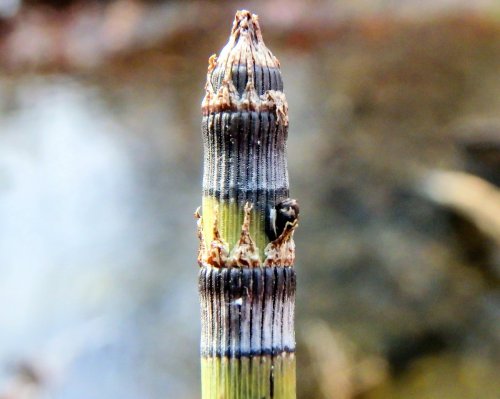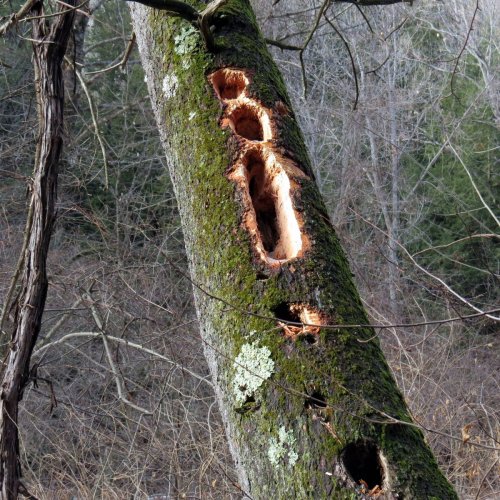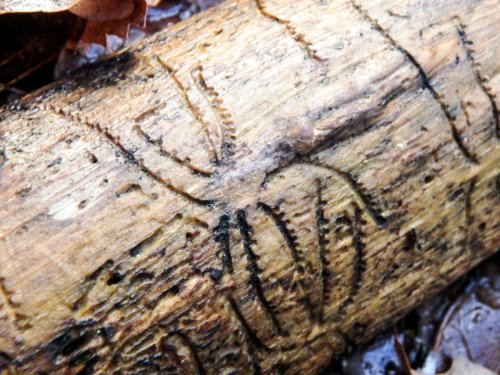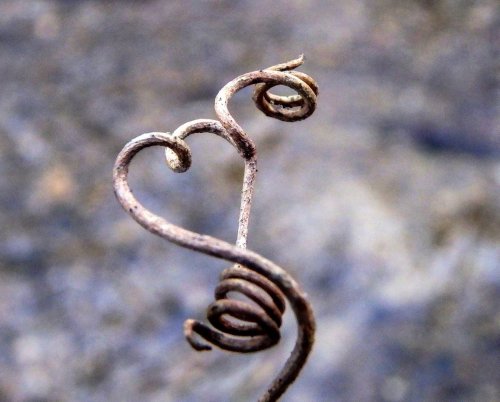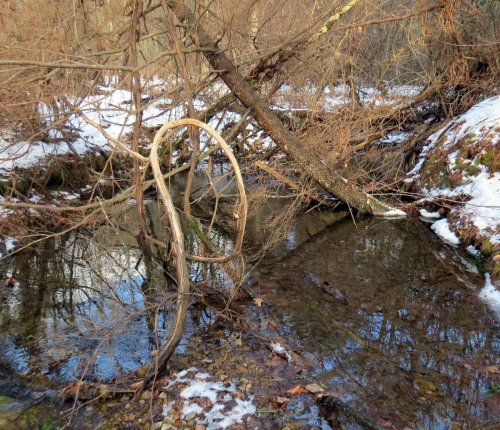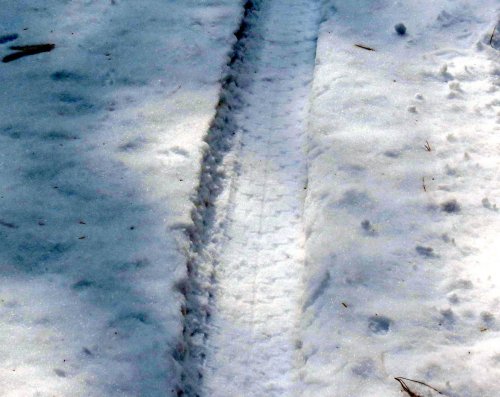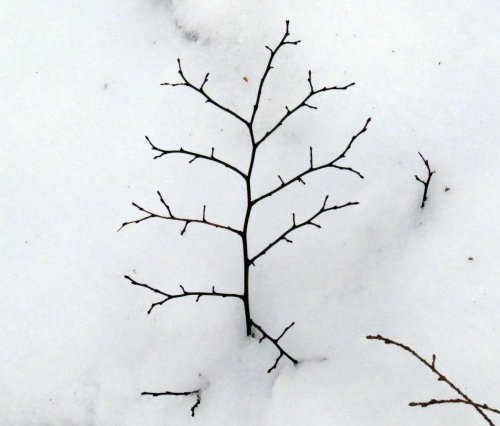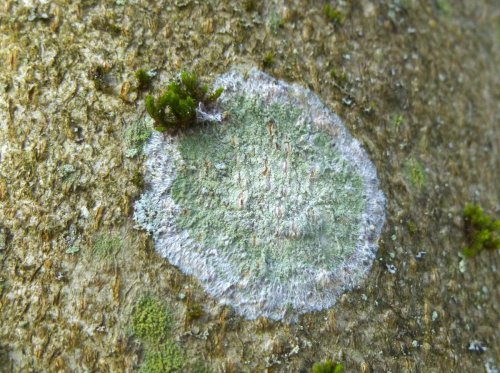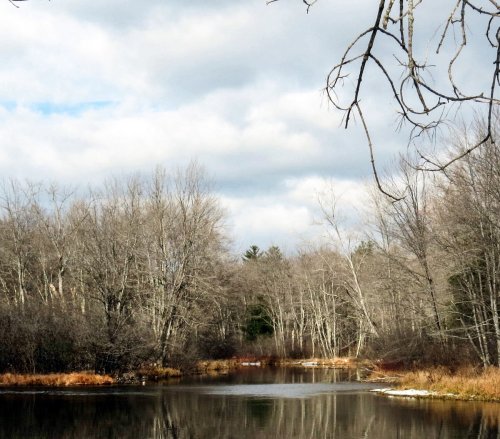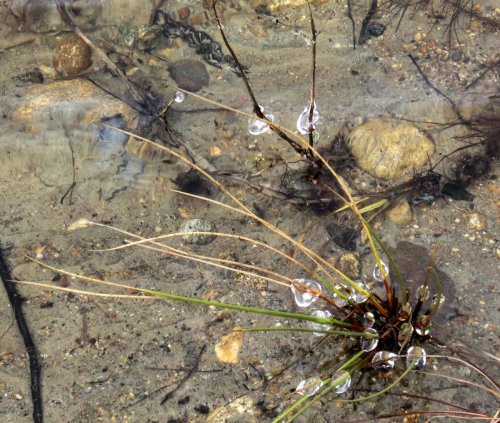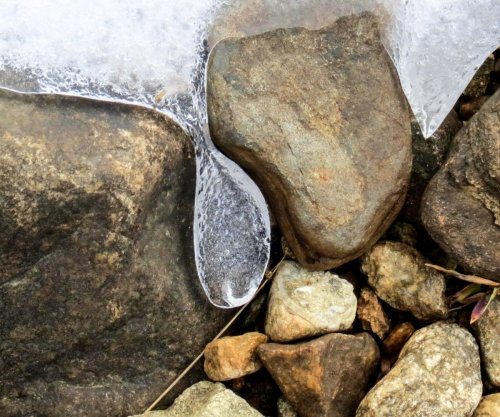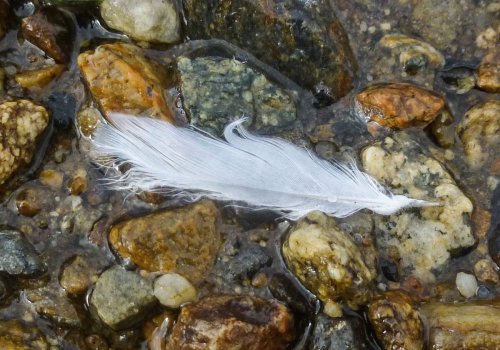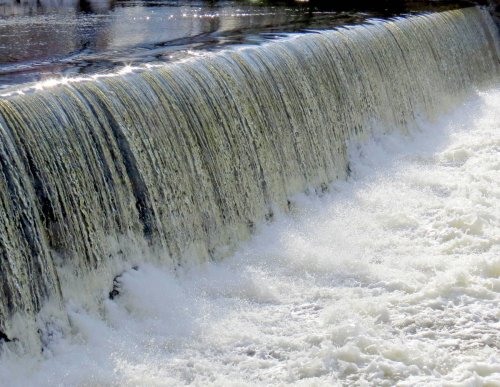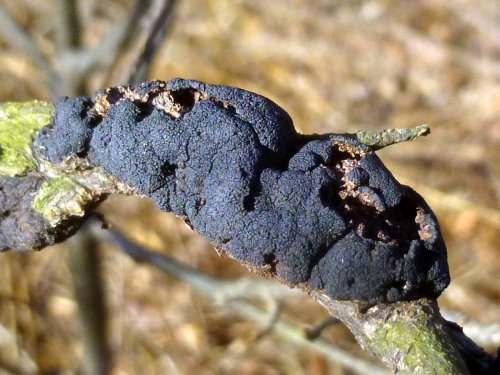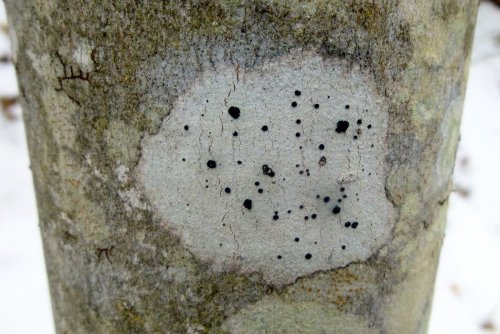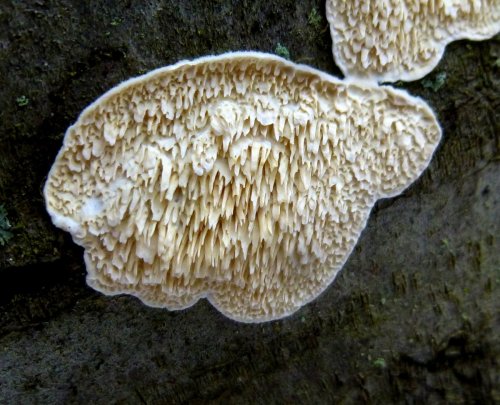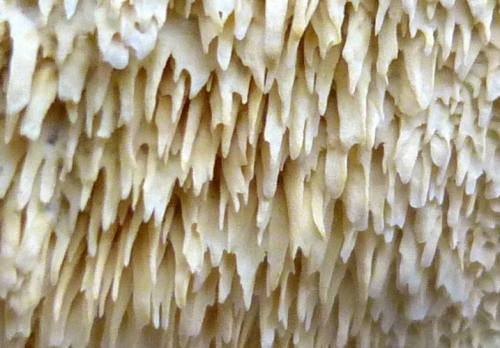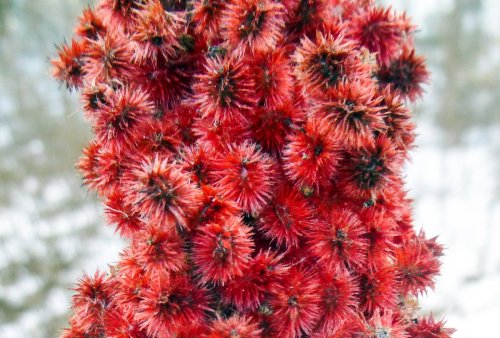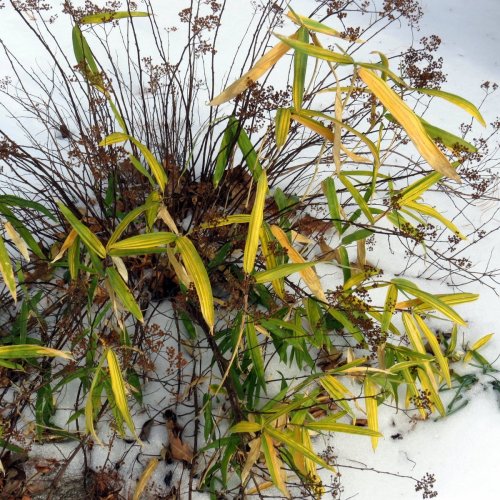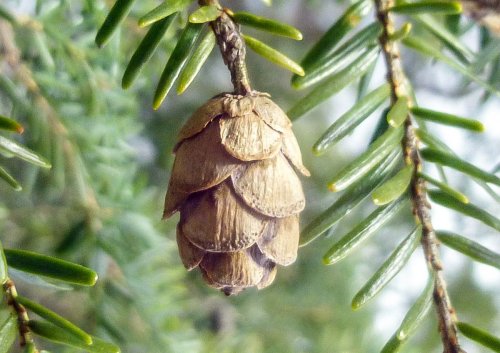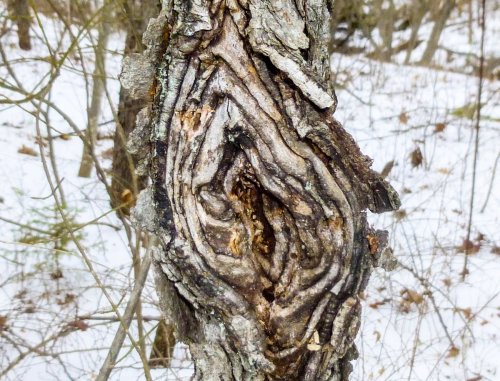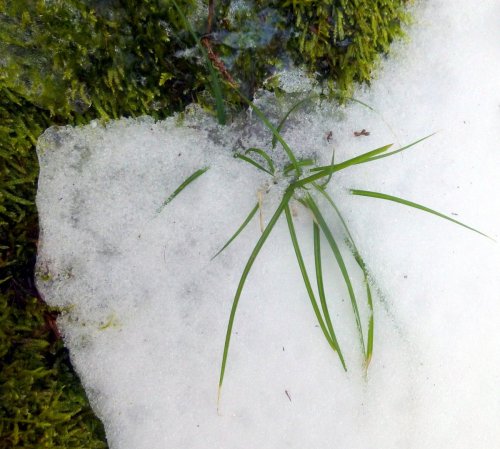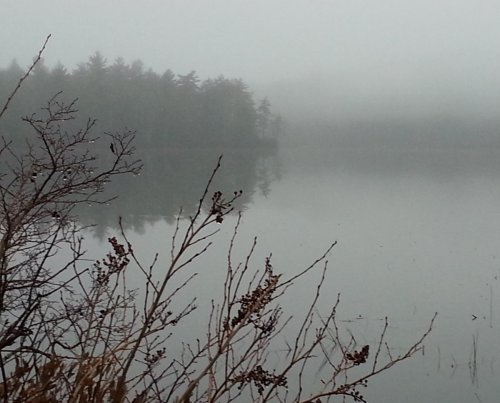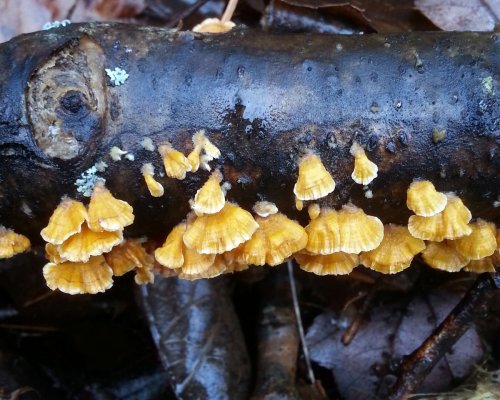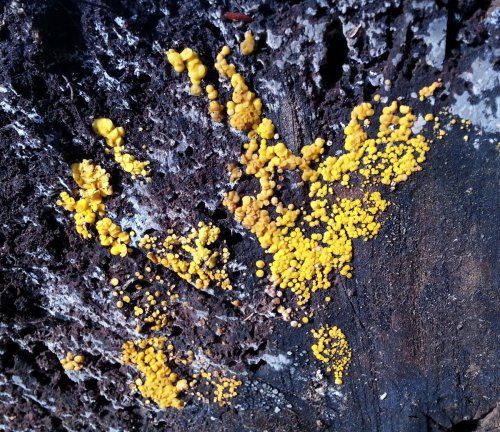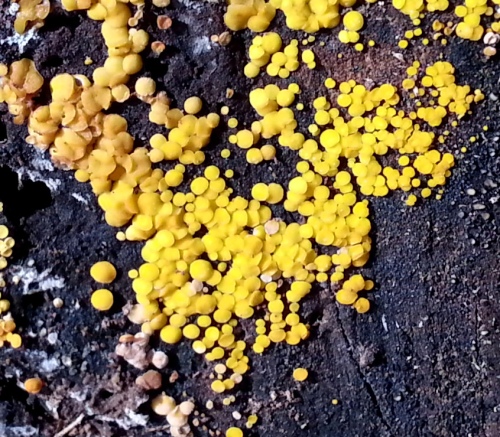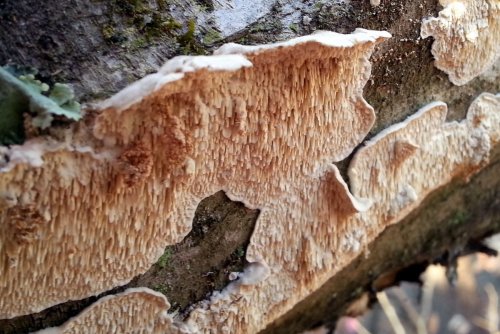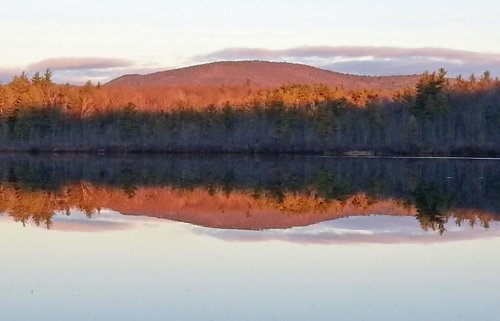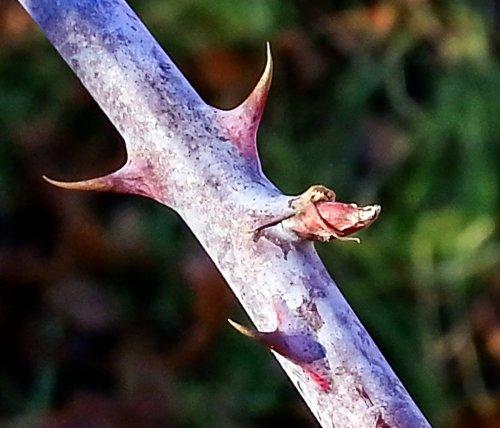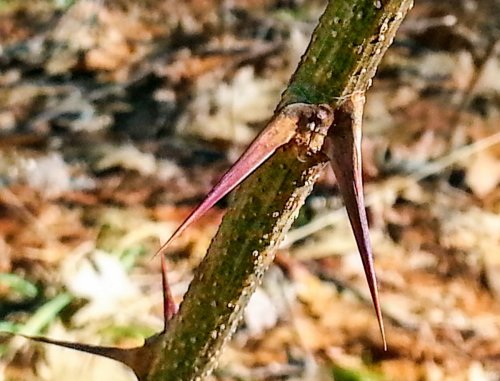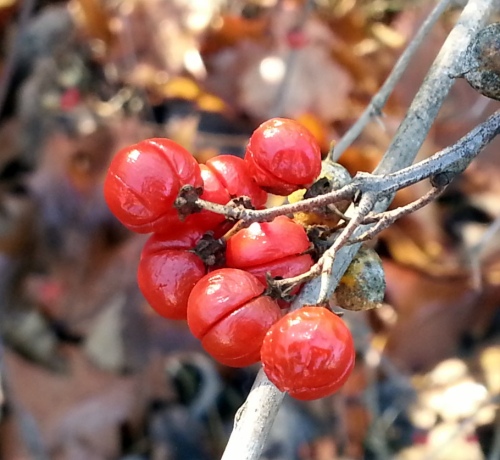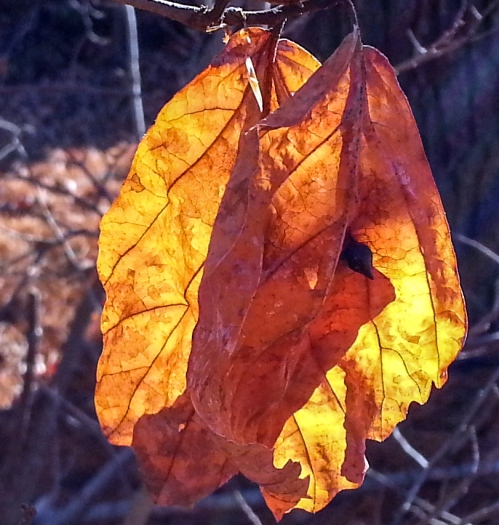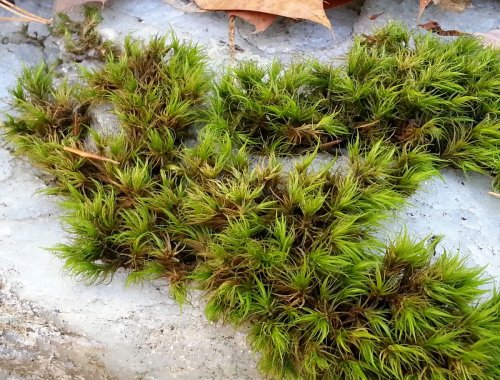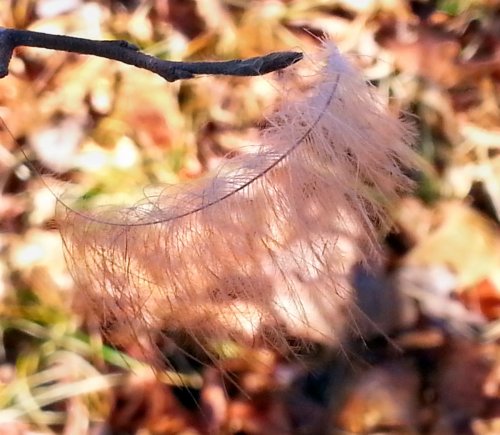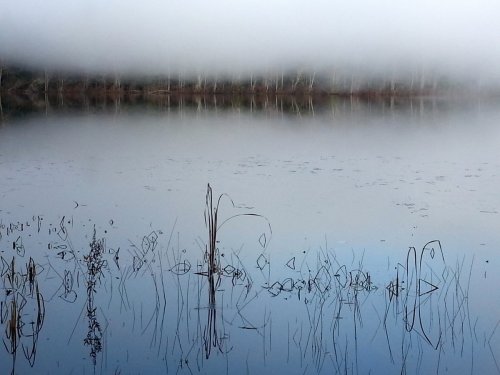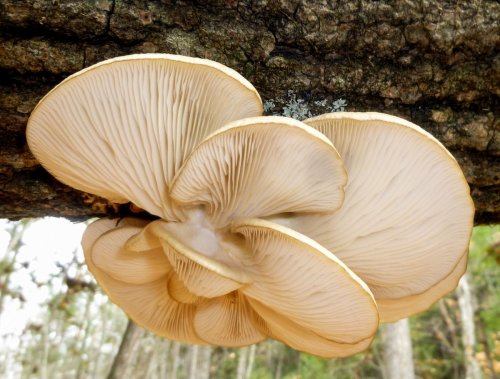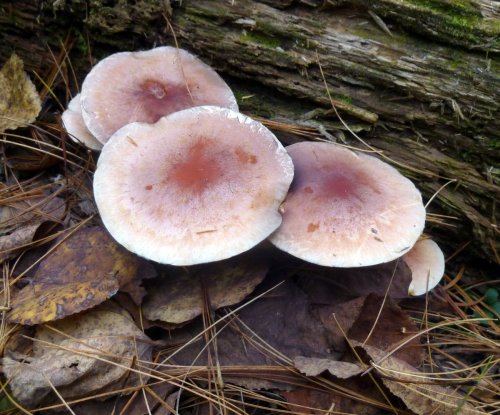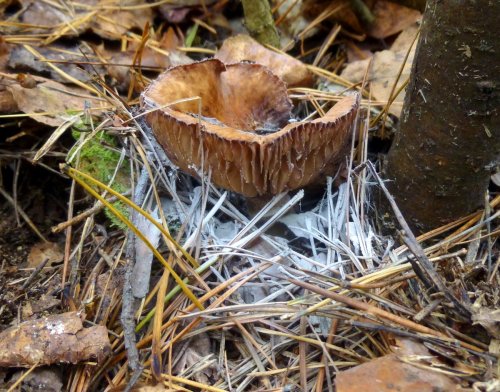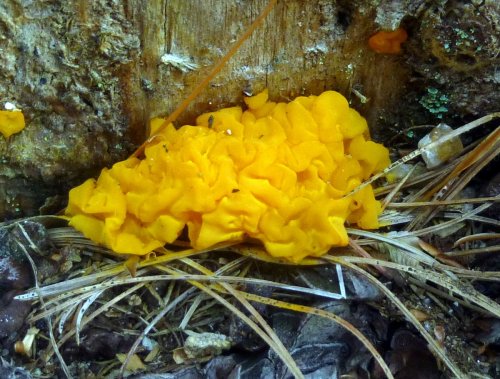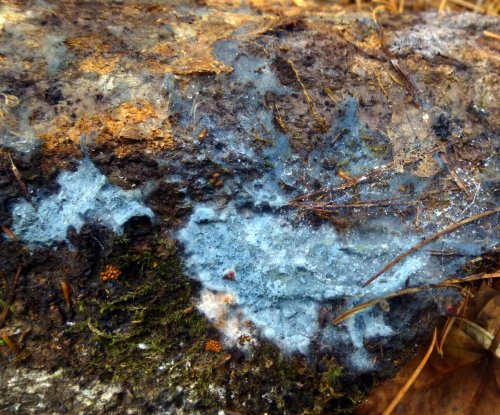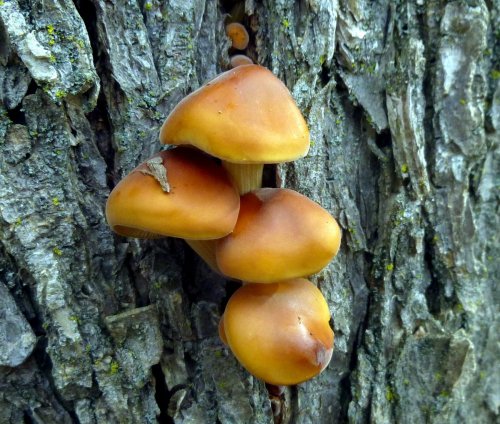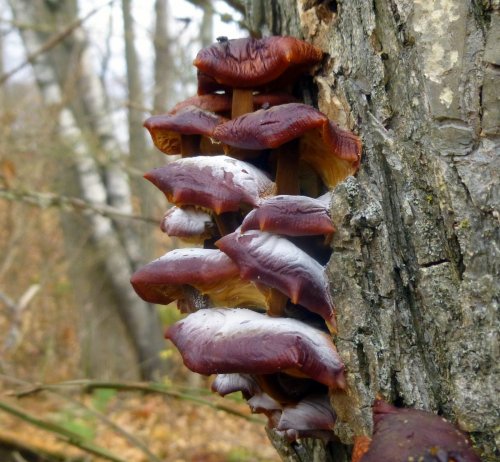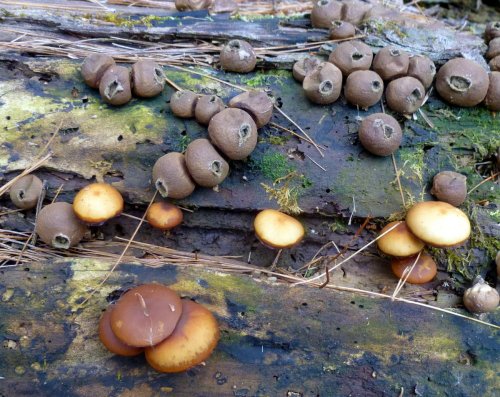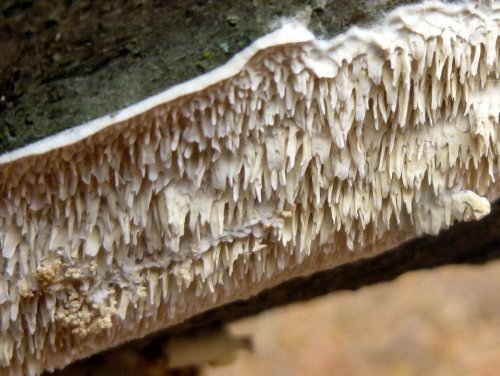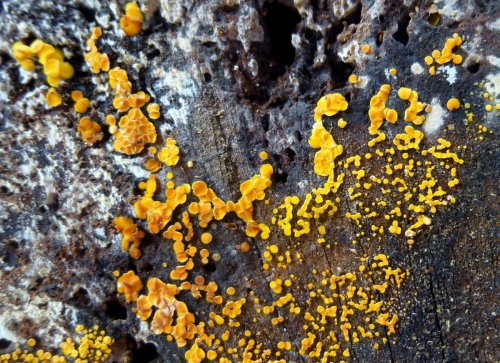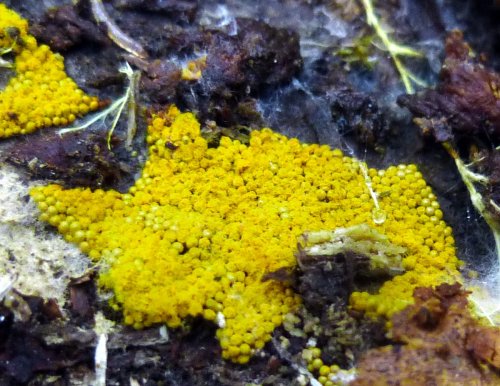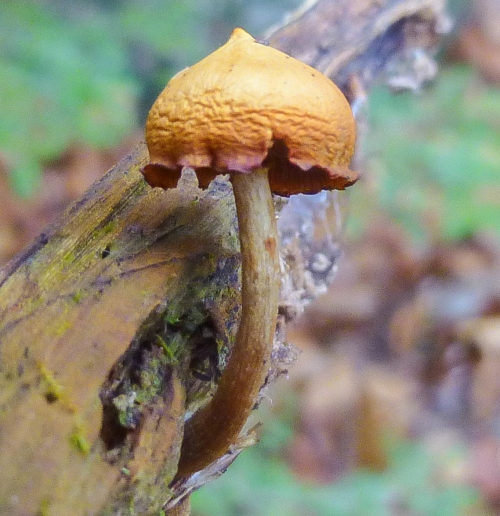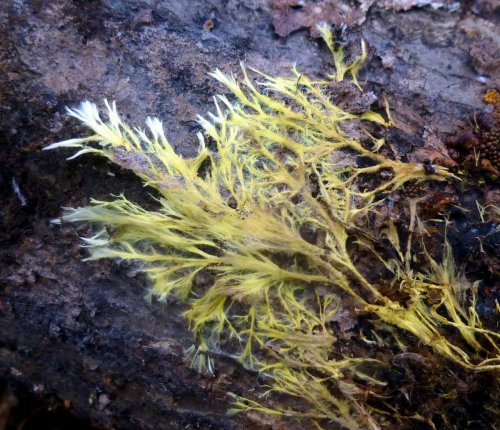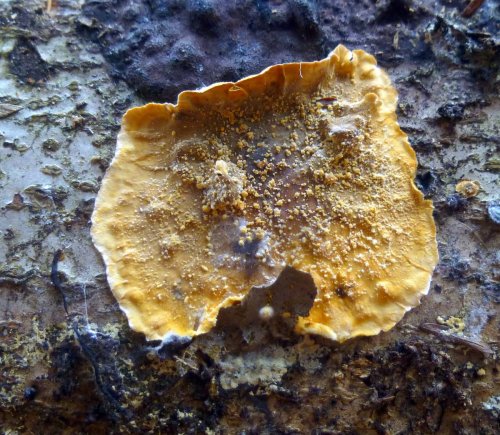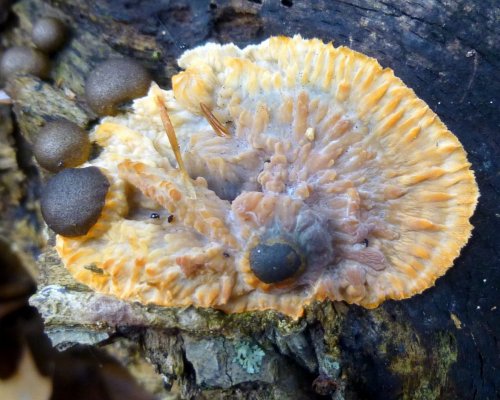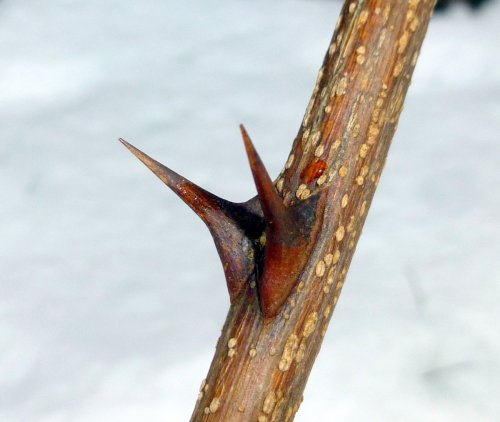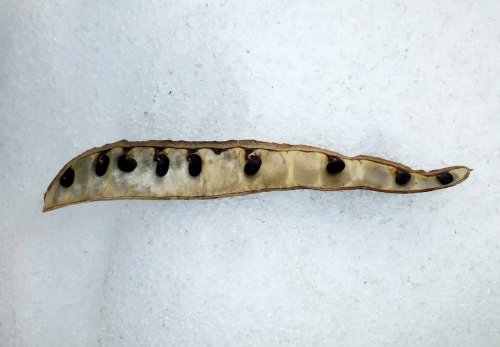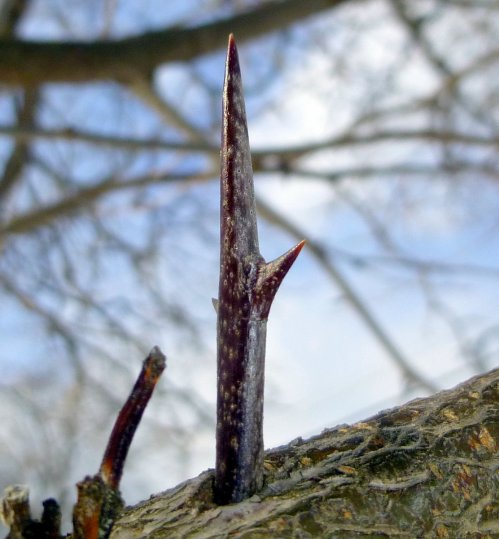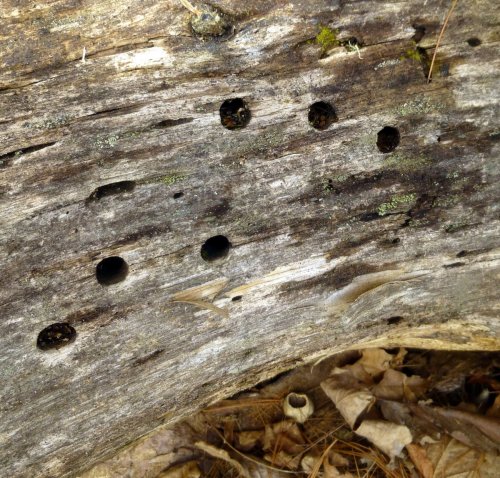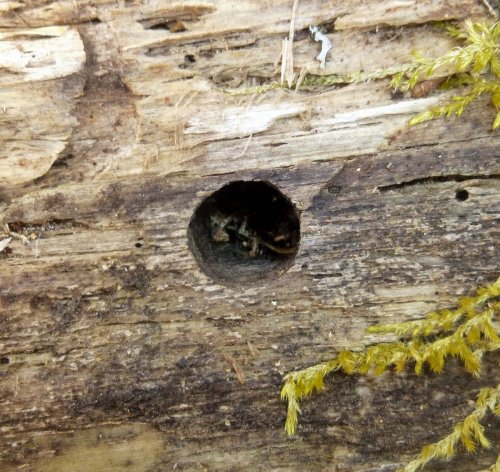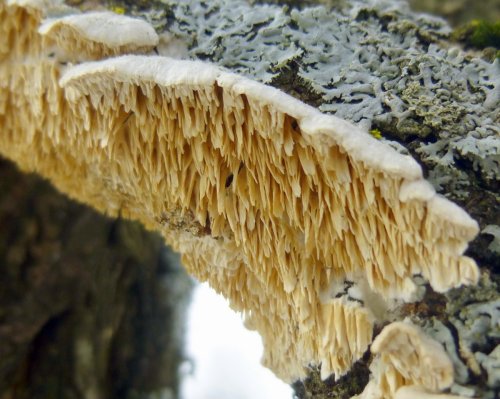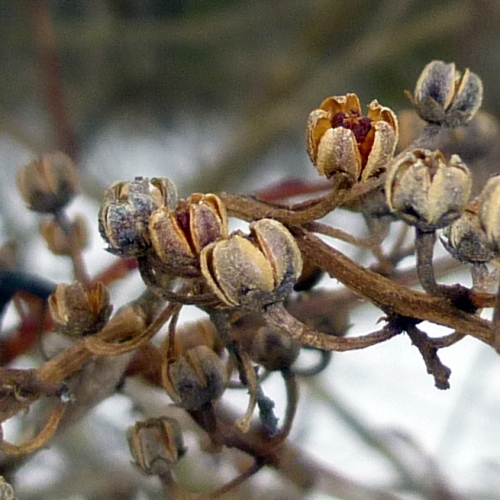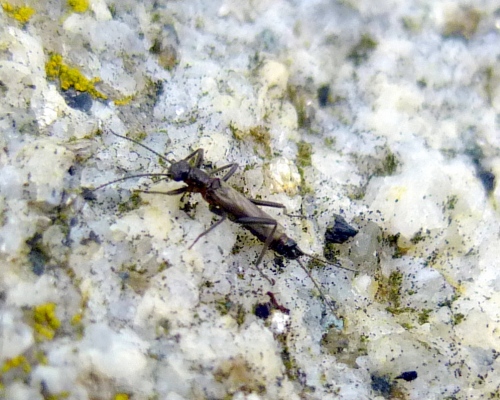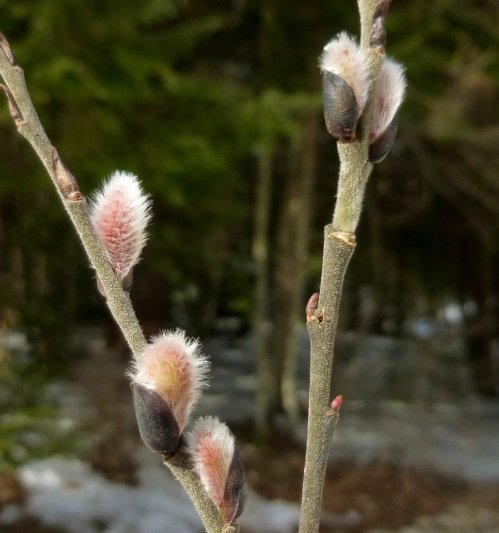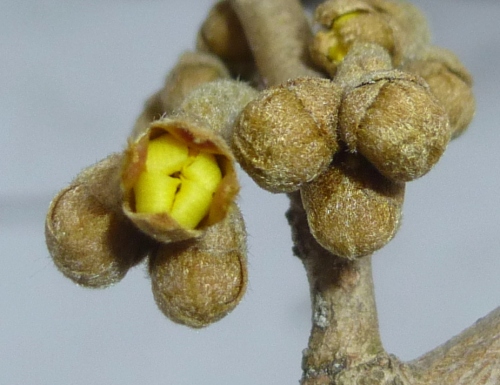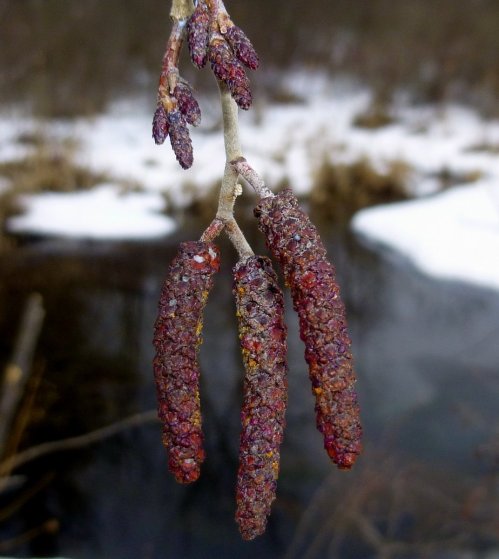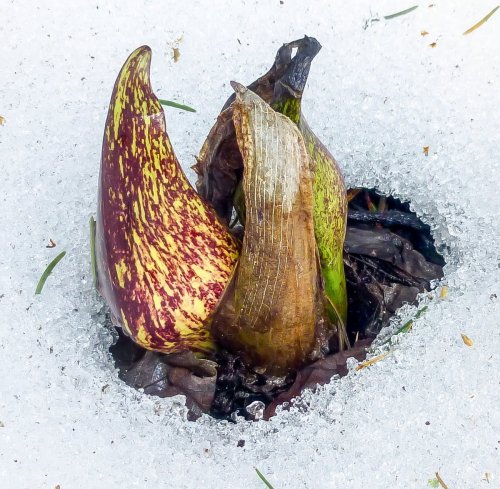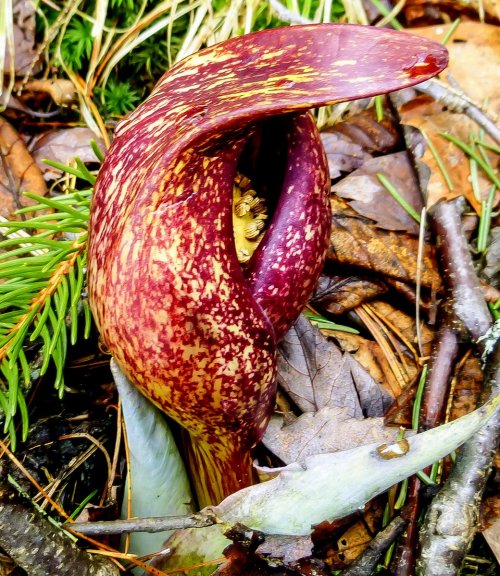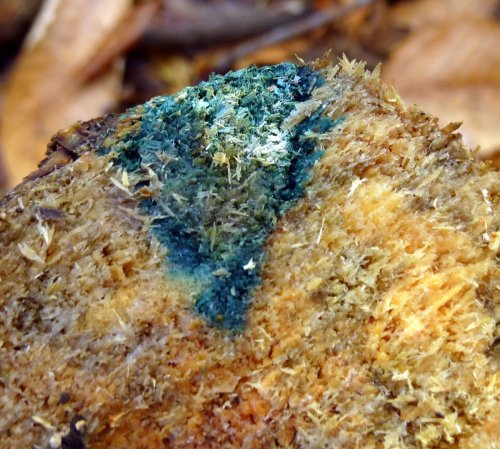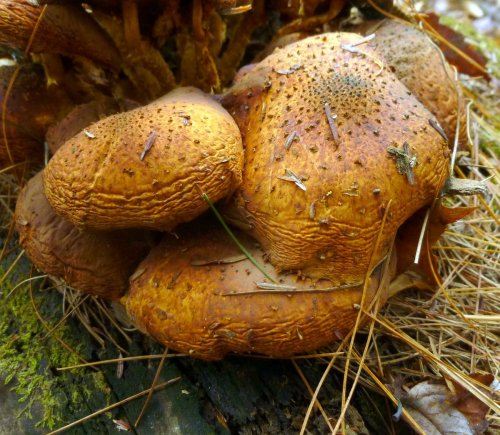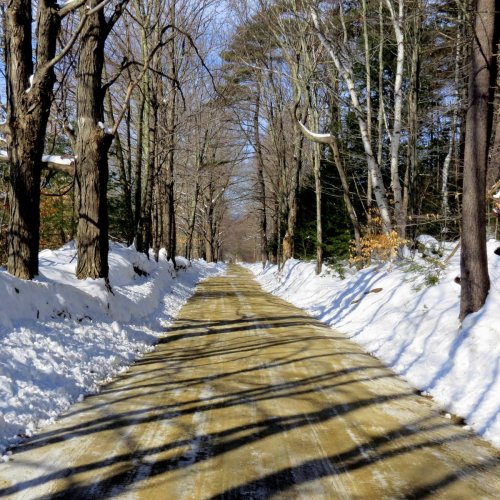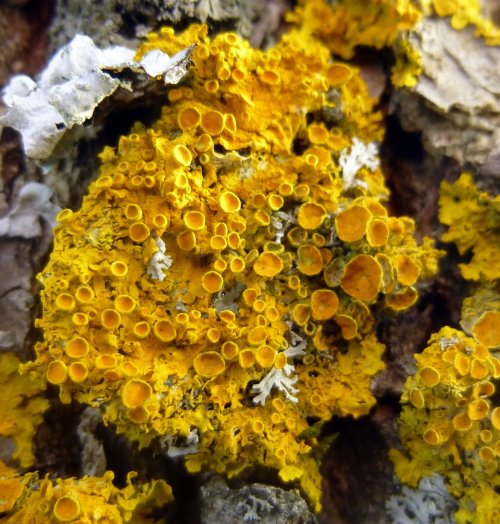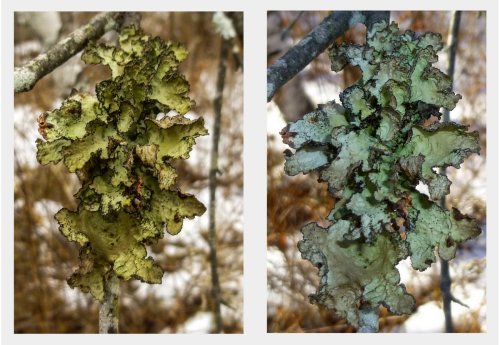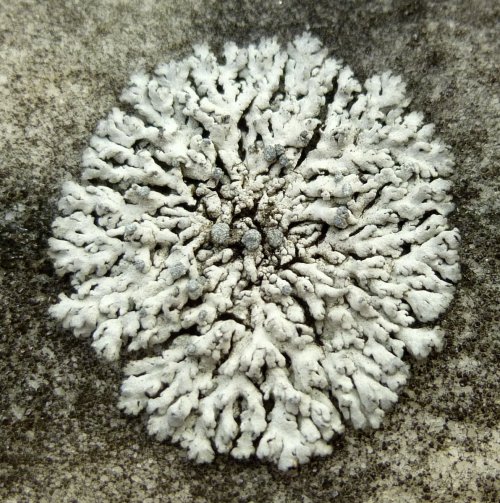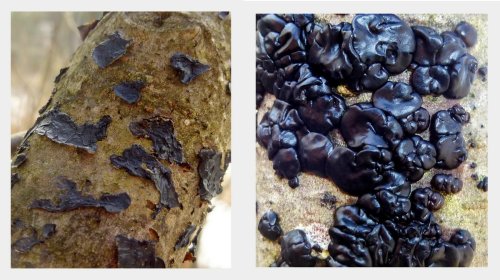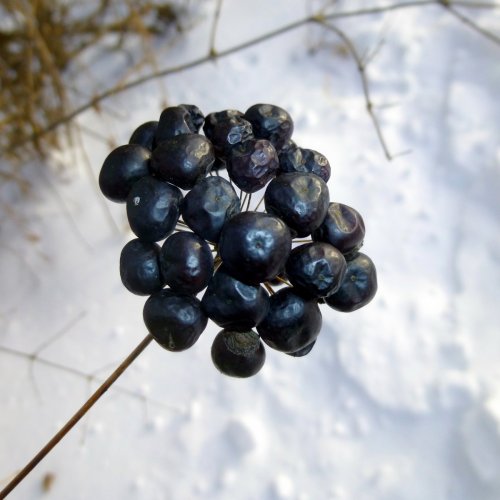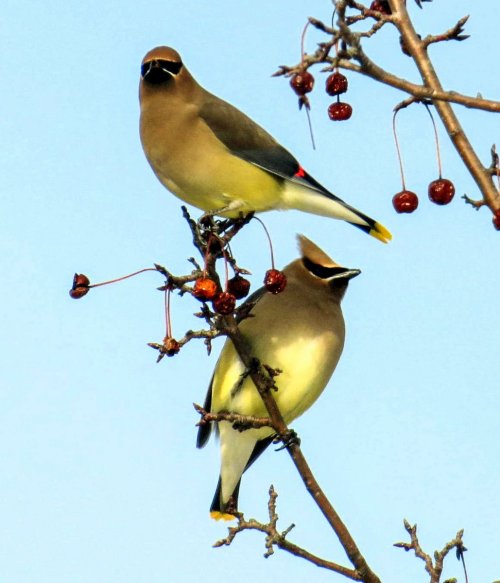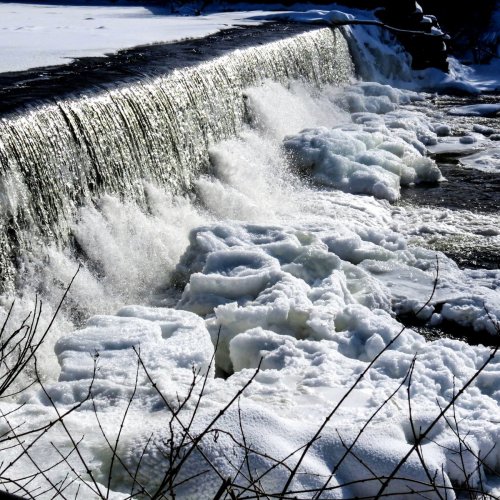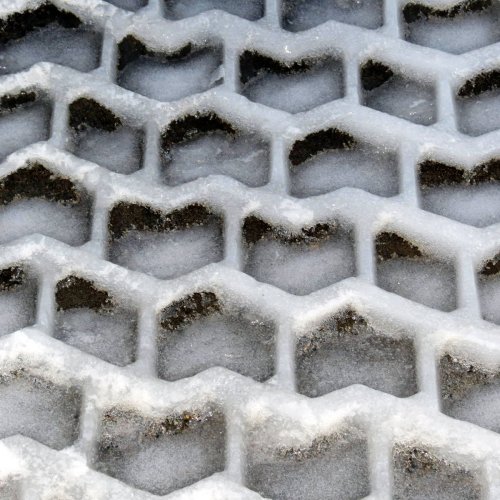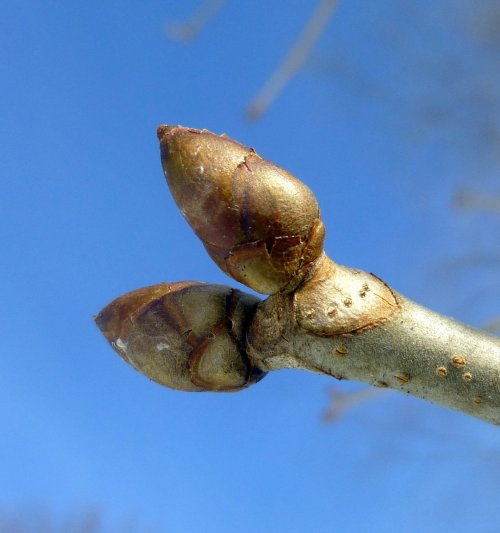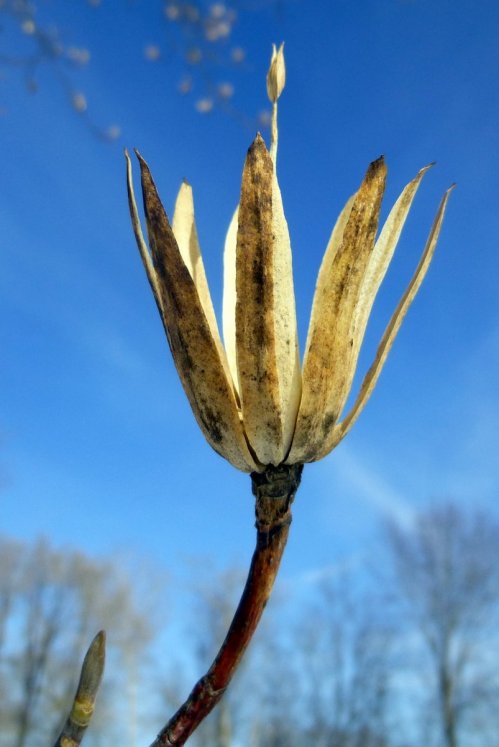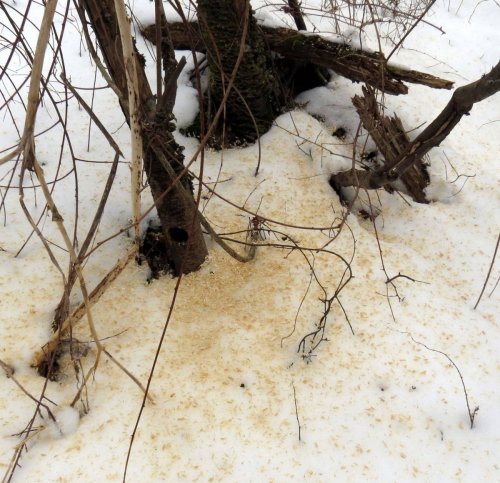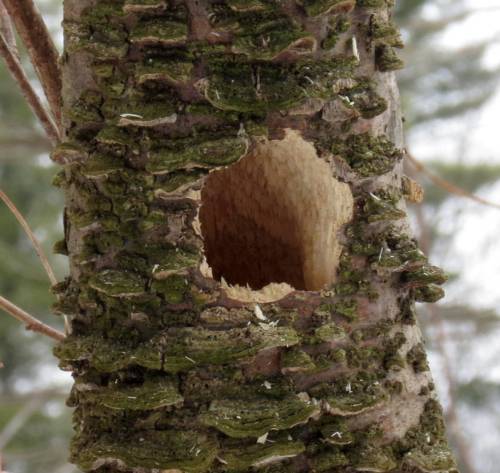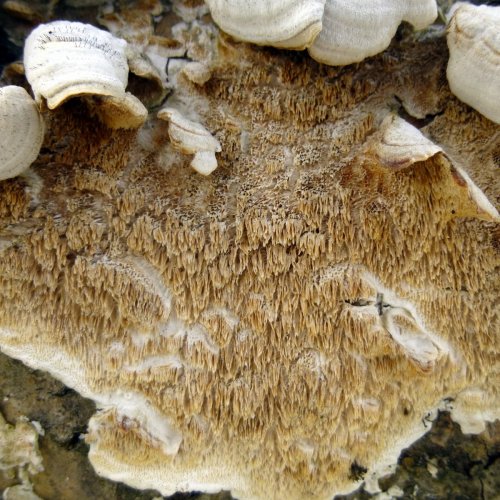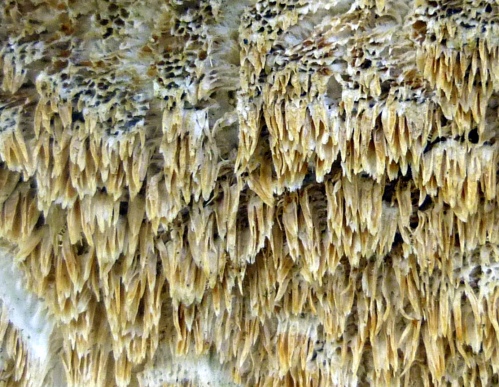There is a small stream near my house that I like to visit at least once in winter and I did so recently. Right now it looks lazy and placid, but I’ve seen it rise overnight into a raging, road eating thing that easily covered everything in this photo except the trees. Its name is Bailey Brook, I just found out the night before posting this, but according to the Maine Geological Survey a brook is just a small stream. On the other hand a stream is a small river or brook, so I’m just going to keep calling it a stream.
One reason I like to come here is to see my old friends the tree mosses (Climacium dendroides.) They’re beautiful little mosses that I never see anywhere else. They must like very wet soil because they grow right at the edge of the stream and are covered by water when the stream floods. In fact all of the plants you’ll see in this post are under water for at least a day or two each year. It is their shape that gives tree mosses their common name but it is their inner light that draws me back here to see them.
Christmas fern (Polystichum acrostichoides) is probably the most common of our evergreen ferns. When seen at this time of year it is obvious that it has had its branches flattened by the weight of the snow because they splay out all over the ground. When the new fronds, or fiddleheads, appear in spring the previous season’s fronds turn yellow and then finally brown. The dead fronds then form a mat around the living fern that helps prevent soil erosion. This is a fern that doesn’t mind wet soil.
Christmas fern is easy to identify by its leaflets that resemble little Christmas stockings. The narrow fine teeth that line the edges of the leaflets and the short leaf stalks can also be seen in this photo. It is said to be called Christmas fern because early settlers brought the green fronds inside at Christmas.
Marginal wood fern (Dryopteris marginalis) is another evergreen fern that also grows well here because it likes damp, shady places. Its spore bearing sori grow on the edges of the leaves and give this fern its common name. The sori are covered by a kidney shaped cap (indusium,) which is smooth. The cap comes off just when the spores are ready to be released, as it has done on at least two of these examples.
The sticky sap from a white pine (Pinus strobus) had dripped on the upper part of the marginal wood fern’s frond. I decided to show it to you so you could see how white pine sap turns blue when it’s cold.
An orange jelly fungus (Dacrymyces palmatus) was drying out and had lost its transparency. Jelly fungi can absorb many times their own weight is water but when they begin to dry out they can shrink down to a hard dry chip the size of a toddler’s fingernail.
I saw a fallen branch with some familiar looking growths on it, so I looked a little closer.
The branch growths had me believing they were slime molds for a minute or two. They looked a lot like a slime mold called Ceratiomyxa fruticulosa v. porioides, which looks like tiny geodesic domes and loves to grow on rotting wood. But something wasn’t right; they were a little too big and they weren’t bright white like Ceratiomyxa fruticulosa. Them my right hand found something cold and jelly like on the branch.
I think what my hand found was a milk white toothed polypore (Irpex lacteus.) This is a “winter” fungus that can appear quite late in the year. It is also a resupinate fungus, which means it looks like it grows upside down, and that’s what many crust fungi seem to do. Their spore bearing surface can be wrinkled, smooth, warty, toothed, or porous and though they appear on the undersides of logs the main body of the fungus is in the wood, slowly decomposing it. This is the first time I’ve seen the “birth” of this fungus.
I saw an awful lot of fungi for a January day. I’m not sure what this one was but it was pleasing to the eye and reminded me of spring, and that was enough.
Artist’s conk (Ganoderma applanatum) grew on an old oak and wasn’t hard to identify. This bracket fungus gets its name from its smooth white underside, which is perfect for drawing on. Any scratch made on the pure white surface becomes brown and will last for many years. I drew a farm scene on one more than 30 years ago and I still have it.
Artist’s conks are perennial fungi that get bigger each year. Older examples can be up to two feet across, but this one was closer to half that. I put my Olympus camera on it to give you an idea of how big it was. This fungus causes heart rot in a wide variety of tree species, so this living tree is doomed.
Horsetails (Equisetum hyemale) rise like spikes from the forest floor. These ancient plants are embedded with silica and are called scouring rushes. They are a great find when you are camping along a stream because you can use them to scour your cooking utensils. Running your finger over a stalk feels much like fine sandpaper.
In Japan horsetails are boiled and dried and then used to smooth wood, and are said to produce a finish superior to any sandpaper. Horsetails produce spores in their cone shaped tips, but the examples in this spot rarely grow them. I think the stripes on them will always remind me of socks.
This tree is full of insects, probably carpenter ants, and the pileated woodpecker that made these holes knew it. Pileated woodpecker holes are almost always rectangular and very big compared to other woodpecker holes. These were quite deep as well.
Pine bark beetles (Ips pini) had a field day here, according to the evidence left behind on several fallen limbs. The look of a jagged saw tooth pattern means unfinished egg chambers. Pine bark beetles kill limbs and trees by girdling them. This stops the movement of water and nutrients up and down the tree and the infected limbs or the entire tree will die. These beetles are small and range in size from about 1/10 to 1/4 of an inch in length, but they can do a lot of damage when enough of them are in a forest.
Native river grapes (Vitis riparia) grow along the stream banks. These are old vines that grow well into the tree tops and the fermenting fruit makes the forest smell like grape jelly on warm fall days. I like looking at their tendrils. Sometimes I see beautiful Hindu dancers in their twisted shapes; other times animals, sometimes birds. This one took the shape of a heart.
River grapes are also called frost grapes, and their extreme cold tolerance makes their rootstock a favorite choice for many well-known grape varieties. They’ve been known to survive temperatures of -57 degrees F. (-49 C)
Bailey Brook gets its start in the Horatio Colony nature preserve in Keene, which was too far away to hike to on this day, so I stopped at this tangle of trees, brush and vines. Finding ways under, over, through or around snags like these can take a lot out of you. This stream completely dried up in last summer’s drought and I could have walked up its bed all the way to its source, but I didn’t. I’m happy to see it full pf water again.
If it weren’t for the rocks in its bed, the stream would have no song. ~Carl Perkins
Thanks for stopping in.
